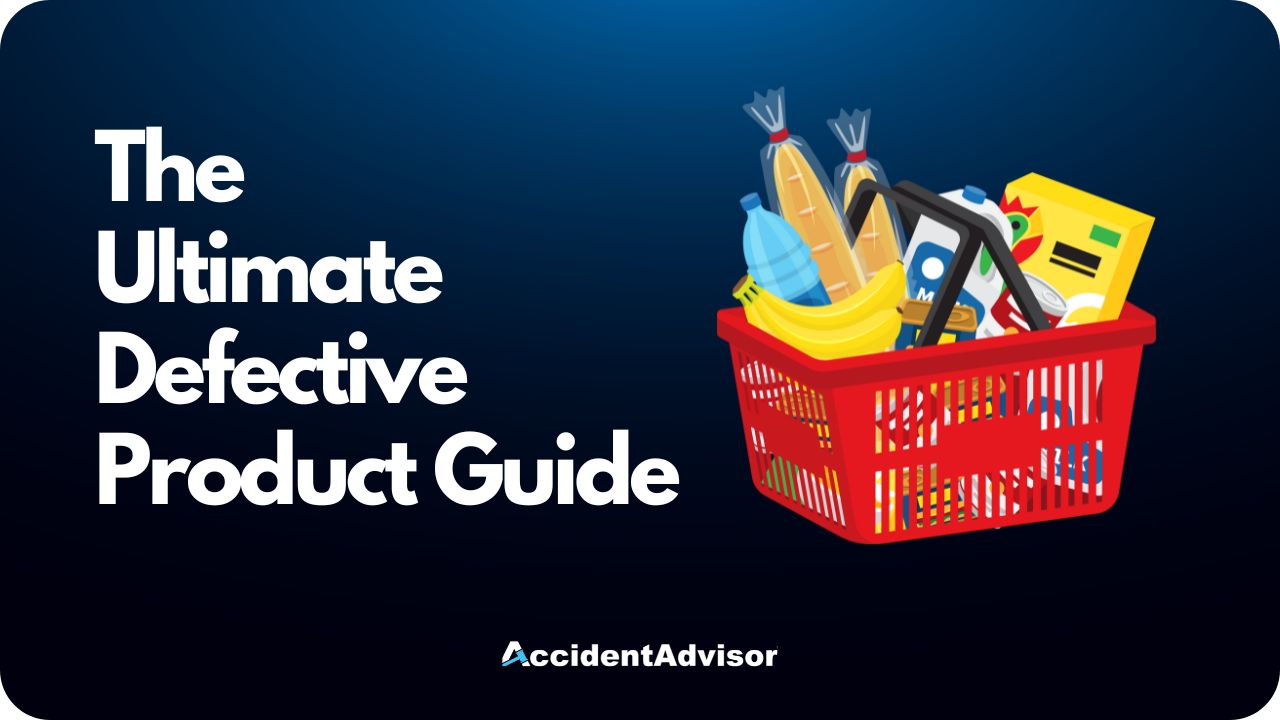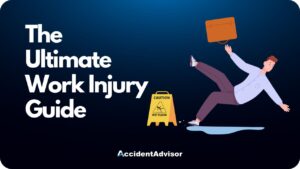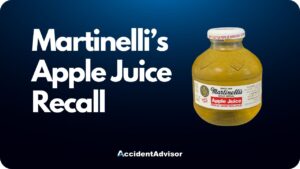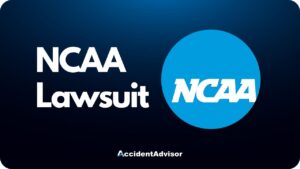Every day, consumers trust the products they buy—whether it’s a car, medication, household appliance, or child’s toy—to work safely and as intended. Unfortunately, not all products are free from danger. Defective or unsafe items can cause serious injuries, property damage, and even death. From faulty brakes in vehicles to unsafe medical devices or flammable electronics, defective products put millions at risk each year.
This guide is designed to help you understand what to do if you or a loved one is harmed by a defective product. It provides step-by-step instructions on how to protect your health, preserve your rights, and seek fair compensation. Whether the issue involves a recall, a class-action lawsuit, or an individual claim, being informed gives you the power to take action.
By the end of this guide, you’ll know how to:
- Respond immediately if you’re injured by a defective product
- Seek medical treatment and document your injuries
- Report defective products to the right agencies
- File insurance claims and pursue lawsuits when necessary
- Understand product recalls and class-action lawsuits
- Learn about average settlement amounts for different types of injuries
- Prevent future harm by staying informed about product safety
Whether you’ve already been injured or simply want to be prepared, this guide will serve as a comprehensive resource for navigating the challenges of defective products and protecting yourself and your family.
Table of Contents
- 1. What to Do if Injured by a Defective Product 🩹
- 2. Obtaining Medical Attention 🏥
- 3. Reporting the Defective Product 📢
- 4. Insurance & Compensation Coverage 💳
- 5. Defective Product Lawsuits ⚖️
- 6. Defective Product Recalls 🔔
- 7. Defective Product Class-Actions 👥
- 8. Defective Product Settlements 💵
- 9. Preventing Injuries from Defective Products 🛑
- 10. Resources & Support 🤝
- Conclusion
1. What to Do if Injured by a Defective Product 🩹
When a product you trusted ends up causing harm, it can be shocking and overwhelming. Acting quickly and correctly is crucial—not only for your health, but also for protecting your rights in future claims or lawsuits.
1.1 Ensure Immediate Safety
If the product is still in use, stop using it immediately. For example, unplug an electrical device, turn off a malfunctioning appliance, or move away from a chemical product that’s leaking or producing fumes. If there’s fire, electrical hazard, or chemical exposure, get to a safe area and call emergency services.
1.2 Seek Medical Attention
Your health comes first. If the injury is serious—such as severe burns, poisoning, broken bones, or heavy bleeding—call 911 right away. Even if your injury feels minor, schedule a medical evaluation as soon as possible. Some injuries, like internal damage or chemical burns, may not show symptoms immediately but can worsen without treatment.
1.3 Preserve the Product and Packaging
Do not throw away the defective product, its packaging, or receipts. These items are crucial evidence in proving your case. Keep everything, including instruction manuals, warranty information, and warning labels. Store the product safely so it cannot cause further injury but remains intact for investigation.
1.4 Document the Incident
Take clear photos of:
- The defective product (including serial or model numbers if visible)
- The injuries you sustained
- The environment where the incident happened
Write down exactly what occurred—what you were doing when the product failed, how it malfunctioned, and the immediate results. The sooner you record the details, the more accurate your account will be for insurance adjusters, lawyers, or courts.
Quick Recap: First Steps After Injury
- Stop using the product and move to safety
- Get medical care immediately
- Preserve the product, packaging, and receipts
- Document injuries and the incident thoroughly
2. Obtaining Medical Attention 🏥
Seeking medical attention after being injured by a defective product is more than just protecting your health—it also creates a record that can be used later if you pursue a claim or lawsuit. Even injuries that seem minor at first can develop into serious complications if untreated.
2.1 Onsite Medical Response
If the injury is severe—such as electrocution, heavy bleeding, fractures, or poisoning—call 911 immediately. Paramedics are trained to stabilize life-threatening conditions and safely transport you to a hospital. In cases involving chemical exposure, medical professionals may provide specialized decontamination or antidotes.
For less urgent injuries, you may still need urgent care services. For example:
- Burns may require immediate cooling and evaluation by a doctor
- Cuts or puncture wounds may need stitches and tetanus shots
- Inhalation of fumes may require oxygen therapy
2.2 Ongoing Care
Some injuries from defective products don’t fully appear until hours or days later. Head injuries, internal bleeding, organ damage, and chemical exposure often have delayed symptoms. That’s why follow-up care is essential. Schedule appointments with specialists as needed—such as orthopedic doctors, neurologists, or toxicologists—depending on your condition.
Regular follow-ups also help ensure you are healing properly and can prevent long-term complications.
2.3 Keeping Medical Records
Medical records are one of the most important forms of evidence in a defective product claim. Always request copies of:
- Emergency room visits
- Doctor notes and diagnostic reports
- X-rays, MRIs, or lab results
- Prescription records
- Physical therapy or rehabilitation records
Keep all receipts and bills for medical care. These documents not only support your claim but also help calculate fair compensation for medical expenses, lost income, and ongoing treatment.
Learn more about what to do if injured by a defective product.
3. Reporting the Defective Product 📢
Once you’ve ensured your safety and received medical care, the next step is reporting the defective product. Reporting serves two important purposes: it helps protect other consumers from being harmed, and it creates an official record that strengthens your potential claim or lawsuit.
3.1 Notify the Manufacturer or Retailer
Contact the company that made or sold the product. Many manufacturers have customer service hotlines or reporting portals for product issues. When you reach out:
- Provide the product’s name, model, and serial number
- Describe what happened, including your injuries
- Keep copies of all emails, letters, or receipts
Be careful not to sign any settlement offers, waivers, or releases without first consulting a lawyer. Companies may try to limit their liability by offering quick refunds or small payments in exchange for your legal rights.
3.2 Reporting to Government Agencies
Depending on the type of product, different federal agencies oversee safety issues:
- Consumer Product Safety Commission (CPSC): Handles most household goods, electronics, toys, appliances, and furniture
- Food and Drug Administration (FDA): Oversees drugs, medical devices, and certain food products
- National Highway Traffic Safety Administration (NHTSA): Covers motor vehicles and auto parts
- U.S. Department of Agriculture (USDA): Regulates certain food safety concerns
Filing a report with the appropriate agency helps trigger investigations and potential recalls that could prevent further injuries.
3.3 Filing a Complaint with Consumer Platforms
Beyond government agencies, you can also file complaints on consumer-focused platforms:
- SaferProducts.gov: A CPSC database where consumers can publicly report dangerous products
- Better Business Bureau (BBB): Helps track company practices and complaints
- State or Local Consumer Protection Offices: Many states have agencies dedicated to investigating defective products and consumer fraud
Reporting ensures your case is documented in multiple places, which can make it harder for companies to deny responsibility later.
4. Insurance & Compensation Coverage 💳
After being injured by a defective product, understanding your insurance coverage is essential for managing medical expenses, property damage, and potential legal claims. Knowing what types of insurance may apply can help reduce out-of-pocket costs while you pursue compensation from the manufacturer or seller.
4.1 Health Insurance Coverage
Health insurance is typically your first line of financial protection for injuries caused by a defective product. Most plans cover:
- Emergency room visits
- Hospitalization
- Diagnostic tests such as X-rays or MRIs
- Specialist consultations
- Physical therapy or rehabilitation
Keep in mind that deductibles and co-pays may apply, and some treatments might require pre-authorization. Always save receipts and medical bills to support your claim against the manufacturer.
4.2 Homeowner’s or Renter’s Insurance
If the defective product caused property damage—for example, a toaster fire or a leaking appliance—your homeowner’s or renter’s insurance may cover repairs or replacement. File a claim with your insurance company and document the damage with photos, receipts, and repair estimates.
4.3 Product Liability Insurance (Manufacturer)
Manufacturers and sellers are often covered by product liability insurance. This type of coverage is designed to pay for:
- Medical costs related to injuries
- Property damage
- Legal fees if a lawsuit arises
While you do not directly access the manufacturer’s insurance, any claim or lawsuit you file will typically be covered by their policy. Having thorough documentation and evidence helps ensure the insurance company pays the appropriate compensation.
Quick Recap: Insurance Coverage Essentials
- Use health insurance to cover immediate medical costs
- File property damage claims through homeowner’s or renter’s insurance
- Product liability insurance protects against manufacturer or seller negligence, but documentation is key
5. Defective Product Lawsuits ⚖️
If you’ve been injured by a defective product, a lawsuit may be necessary to obtain full compensation, especially when injuries are serious or the manufacturer denies responsibility. Understanding how product liability cases work can help you navigate the process effectively.
5.1 When to File a Lawsuit
Not every defective product incident requires a lawsuit. Consider legal action if:
- Injuries are severe, permanent, or life-threatening
- Medical bills, lost wages, and property damage are significant
- The manufacturer refuses to take responsibility or offer a fair settlement
Consulting a product liability attorney early can help you determine the best course of action.
5.2 Types of Product Defects
Lawsuits often fall under one of three categories:
- Design defects: Flaws in the product’s design make it inherently unsafe
- Manufacturing defects: Errors during production create a dangerous product
- Marketing defects (failure to warn): Inadequate instructions, warnings, or labels fail to inform consumers of risks
Identifying the type of defect is critical for building a strong case.
5.3 Legal Theories of Liability
Your claim may be based on one or more legal theories:
- Negligence: The manufacturer failed to exercise reasonable care
- Strict liability: You do not need to prove negligence; the product was defective and caused injury
- Breach of warranty: The product failed to meet the promises or guarantees made by the manufacturer
5.4 Steps in Filing a Lawsuit
- Consult an attorney: A lawyer specializing in product liability will evaluate your case.
- Statute of limitations: Each state sets deadlines for filing claims, typically 1–3 years from the date of injury.
- Filing a complaint: The lawsuit officially begins when a complaint is submitted to the court.
- Discovery: Both sides exchange evidence, including medical records, product testing, and expert testimony.
- Settlement or trial: Many cases settle before trial, but if negotiations fail, your case may go to court.
Quick Recap: Filing a Defective Product Lawsuit
- File a lawsuit when injuries are significant or compensation is denied
- Identify the type of defect and legal theory for your case
- Follow the proper legal steps and deadlines
- Consider expert testimony and thorough documentation to strengthen your claim
Learn more about defective product lawsuits.
6. Defective Product Recalls 🔔
Recalls are one of the most important tools for protecting consumers from defective products. Understanding how recalls work and how to respond can prevent injuries and strengthen your legal or insurance claims.
6.1 How Recalls Work
Recalls occur when a product is found to pose a safety risk. They can be:
- Voluntary: The manufacturer initiates the recall after discovering a defect
- Mandatory: A government agency, such as the CPSC or FDA, orders the manufacturer to recall the product
Agencies often issue press releases, post warnings online, and provide instructions for returning, repairing, or replacing the product.
6.2 Consumer Responsibilities
If you discover your product has been recalled:
- Stop using it immediately
- Follow the manufacturer’s instructions for return, repair, or replacement
- Keep documentation of the recall notice, communications with the manufacturer, and any costs incurred
Checking if your product is part of a recall can be done through websites like CPSC.gov, FDA.gov, or NHTSA.gov, depending on the type of product.
6.3 Recent High-Profile Recalls
Examples of recalls demonstrate the wide range of products that can pose risks:
- Household appliances: Electrical fires or malfunctioning heating elements
- Children’s toys: Choking hazards or lead contamination
- Automotive parts: Faulty airbags or brakes
- Medical devices: Implanted devices or surgical tools causing injury
Staying informed about recalls helps prevent further harm and supports your ability to take timely legal action if needed.
Learn more about defective product recalls.
7. Defective Product Class-Actions 👥
When a defective product harms multiple consumers, a class-action lawsuit can be an effective way to pursue compensation. These cases allow many victims to join forces against a company, sharing resources and legal costs.
7.1 What is a Class-Action?
A class-action is a lawsuit where one or more plaintiffs represent a larger group of people affected by the same defective product. The court certifies the class, allowing all similarly injured parties to participate in a single legal proceeding.
7.2 Benefits of Joining a Class-Action
- Shared legal costs: Attorneys often work on contingency, spreading costs across the group
- Stronger case: Combining evidence from multiple victims strengthens the argument
- Efficiency: One lawsuit can resolve issues for hundreds or thousands of people, saving time and effort compared to individual cases
7.3 Limitations of Class-Actions
- Lower individual payouts: Compensation is divided among all class members, which may be less than a successful individual lawsuit
- Less control: Participants typically cannot dictate the settlement terms or legal strategy
- Timeline: Class-action cases can take years to resolve due to the complexity and number of parties involved
Quick Recap: Class-Action Considerations
- Useful when multiple people are injured by the same defective product
- Provides shared resources and a stronger collective claim
- Understand that individual control and compensation may be limited
8. Defective Product Settlements 💵
Settlements are often the most practical way to resolve defective product claims without going to trial. Understanding what to expect can help you make informed decisions and ensure you receive fair compensation.
8.1 Average Settlement Amounts
Settlement amounts vary widely depending on the type and severity of the injury:
- Minor injuries (cuts, burns, mild chemical exposure): Typically a few thousand dollars
- Moderate injuries (broken bones, surgeries, temporary disability): Tens of thousands of dollars
- Serious injuries (permanent disability, organ damage, severe burns): Hundreds of thousands to millions of dollars
- Catastrophic injuries or wrongful death: Often millions, depending on lifetime care costs and emotional impact
Factors influencing settlement amounts include the strength of evidence, liability clarity, medical expenses, lost wages, and the severity of pain and suffering.
8.2 Types of Compensation
- Economic damages: Medical bills, property damage, lost income, rehabilitation costs
- Non-economic damages: Pain and suffering, emotional distress, diminished quality of life
- Punitive damages: Awarded in cases of extreme negligence or intentional misconduct
8.3 Settlement Timeline
Settlement timelines vary based on complexity:
- Minor injury claims may settle within weeks or months
- Complex cases involving multiple victims, recalls, or ongoing medical care may take years
- Timely documentation and legal representation often help speed the process and maximize compensation
Quick Recap: Understanding Settlements
- Settlement amounts depend on injury severity, evidence, and liability
- Compensation can include medical, financial, and emotional losses
- Some cases resolve quickly, while others require lengthy negotiations or trials
Learn more about defective product settlements.
9. Preventing Injuries from Defective Products 🛑
While you cannot control every product you encounter, taking proactive steps as a consumer can significantly reduce the risk of injury. Awareness, vigilance, and careful use of products help protect you and your family.
9.1 Safe Consumer Practices
- Register products: Many manufacturers require registration to receive recall notices
- Read instructions and warnings carefully: Following safety guidelines prevents misuse
- Inspect products before use: Look for visible damage, missing parts, or defects
9.2 Staying Informed About Recalls
- Regularly check CPSC.gov, FDA.gov, or NHTSA.gov depending on the product type
- Sign up for email alerts or notifications from manufacturers and government agencies
- Immediately follow recall instructions to repair, return, or replace dangerous products
9.3 Household Safety Checks
- Periodically inspect older appliances, children’s toys, and electrical devices
- Dispose of recalled or damaged products safely to prevent accidental injury
- Keep potentially hazardous products out of reach of children
Quick Recap: Preventing Product Injuries
- Register and inspect products, and read all safety instructions
- Stay updated on recalls and alerts
- Regularly check household items, especially older or frequently used products
10. Resources & Support 🤝
Recovering from an injury caused by a defective product often involves more than just medical care. Emotional, legal, and financial support can make the process more manageable and help you protect your rights.
10.1 Consumer Protection Agencies
Several agencies help ensure products meet safety standards and assist injured consumers:
- Consumer Product Safety Commission (CPSC): For household products, electronics, and toys
- Food and Drug Administration (FDA): For drugs, medical devices, and certain food products
- National Highway Traffic Safety Administration (NHTSA): For vehicles and auto parts
- State Consumer Protection Offices: Many states have agencies to investigate complaints and enforce safety regulations
10.2 Legal Aid
- Product liability attorneys: Specialize in defective product claims and can help maximize compensation
- Bar association referral services: Connect you with qualified attorneys in your area
- Pro bono or low-cost legal services: Available for individuals who cannot afford private representation
10.3 Emotional & Financial Support
- Counseling or therapy: Helps cope with trauma, stress, or anxiety caused by injuries
- Nonprofit organizations: Some provide financial or practical assistance for victims of injuries
- Support groups: Connecting with others who have been harmed by defective products can provide guidance and reassurance
Quick Recap: Leveraging Support Resources
- Use consumer protection agencies to report and document defective products
- Seek legal representation for claims or lawsuits
- Access emotional and financial support to help with recovery
Conclusion
Being injured by a defective product can be sudden, frightening, and life-altering. However, knowing the right steps to take can protect your health, legal rights, and financial well-being. From immediate safety and medical care to reporting the product, navigating recalls, pursuing claims or lawsuits, and seeking emotional and financial support, each action contributes to a safer and more effective recovery.
This guide has covered:
- Immediate actions to take if injured, including preserving the product and documenting the incident
- Obtaining medical attention and keeping thorough records
- Reporting defective products to manufacturers and government agencies
- Understanding insurance coverage and compensation options
- Filing individual lawsuits or joining class-action lawsuits
- Handling recalls and understanding how they protect consumers
- Average settlements based on injury severity and compensation types
- Preventing future injuries through safe consumer practices
- Accessing legal, emotional, and financial resources
Remember, you are not powerless when a product harms you. Taking prompt, informed action ensures that you and others are protected and that responsible parties are held accountable. Staying aware, documenting carefully, and seeking proper guidance allow you to recover safely and pursue the justice and compensation you deserve.

Rocky Horton
Author













